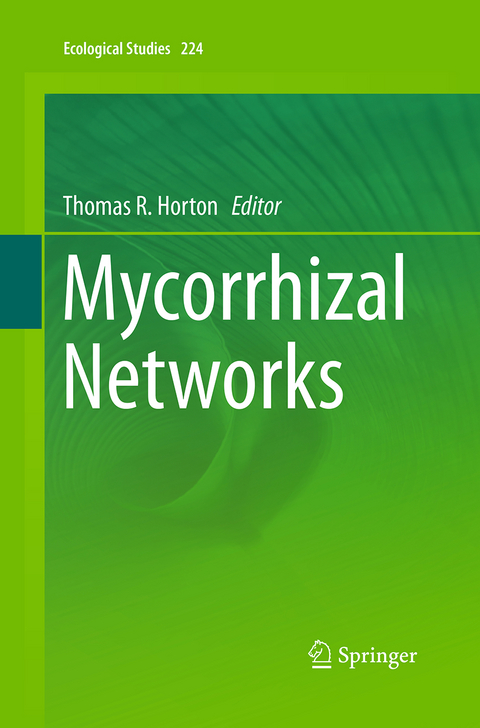
Mycorrhizal Networks
Springer (Verlag)
978-94-024-0822-5 (ISBN)
Chapter 1 addresses the specificity of ectomycorrhizal symbionts and its role in plant communities, and provides an updated list of terms and definitions. Chapter 2 explores interactions between symbionts in mycorrhizal fungi networks, as well as interactions between fungal individuals. The second section of the book begins with the examination in Chapter 3 of extramatrical mycelium (mycelia beyond the root tips) in ectomycorrhizal fungi, focused on carbon and nitrogen. Chapter 4 reviews the influence of mycorrhizal networks on outcomes of plant competition in arbuscular mycorrhizal plant communities. Chapter 5 discusses nutrient movement between plants through networks with a focus on the magnitude, fate and importance of mycorrhiza-derived nutrients in ectomycorrhizal plants. Section 3
opens with a review of research on the role of ectomycorrhizal networks on seedling establishment in a primary successional habitat, in Chapter 6. The focus of Chapter 7 is on facilitation and antagonism in arbuscular mycorrhizal networks. Chapter 8 explores the unique networking dynamic of Alnus, which differs from most ectomycorrhizal plant hosts in forming isolated networks with little direct connections to networks of other host species in a forest. Chapter 9 argues that most experiments have not adequately tested the role of mycorrhizal networks on plant community dynamics, and suggests more tests to rule out alternative hypotheses to carbon movement between plants, especially those that include experimental manipulations of the mycorrhizal networks.
Plant ecologists have accumulated a rich body of knowledge regarding nutrient acquisition by plants. The editor proposes that research indicating that mycorrhizal fungi compete for nutrients, which are then delivered to multiple hosts through mycorrhizal networks, represents an important new paradigm for plant ecologists.
1. Mycorrhiza Specificity: Its Role in the Development and Function of Common Mycelial Networks.- 2. Functional Significance of Anastomosis in Arbuscular Mycorrhizal Networks.- 3. The Importance of Ectomycorrhizal Networks for Nutrient Retention and Carbon Sequestration in Forest Ecosystems.- 4. Nutrient Dynamics in Arbuscular Mycorrhizal Networks.- 5. Resource Transfer Between Plants Through Ectomycorrhizal Fungal Networks.- 6. The Role of Ectomycorrhizal Networks in Seedling Establishment and Primary Succession.- 7. Facilitation and Antagonism in Mycorrhizal Networks.- 8. Interspecific Mycorrhizal Networks and Non-Networking Hosts: Exploring the Ecology of the Host Genus Alnus.- 9. Experimentally Testing Effects of Mycorrhizal Networks On Plant Ecology and Distinguishing Among Mechanisms.- Index.
| Erscheint lt. Verlag | 23.8.2016 |
|---|---|
| Reihe/Serie | Ecological Studies ; 224 |
| Zusatzinfo | 16 Illustrations, color; 25 Illustrations, black and white; XVIII, 286 p. 41 illus., 16 illus. in color. |
| Verlagsort | Dordrecht |
| Sprache | englisch |
| Maße | 155 x 235 mm |
| Themenwelt | Naturwissenschaften ► Biologie ► Botanik |
| Naturwissenschaften ► Biologie ► Ökologie / Naturschutz | |
| Naturwissenschaften ► Geowissenschaften ► Geologie | |
| Weitere Fachgebiete ► Land- / Forstwirtschaft / Fischerei | |
| Schlagworte | hyphal networks • mutualism - parasitisim • Mycorrhizal Fungi • plant community ecology • symbiosis |
| ISBN-10 | 94-024-0822-3 / 9402408223 |
| ISBN-13 | 978-94-024-0822-5 / 9789402408225 |
| Zustand | Neuware |
| Haben Sie eine Frage zum Produkt? |
aus dem Bereich


